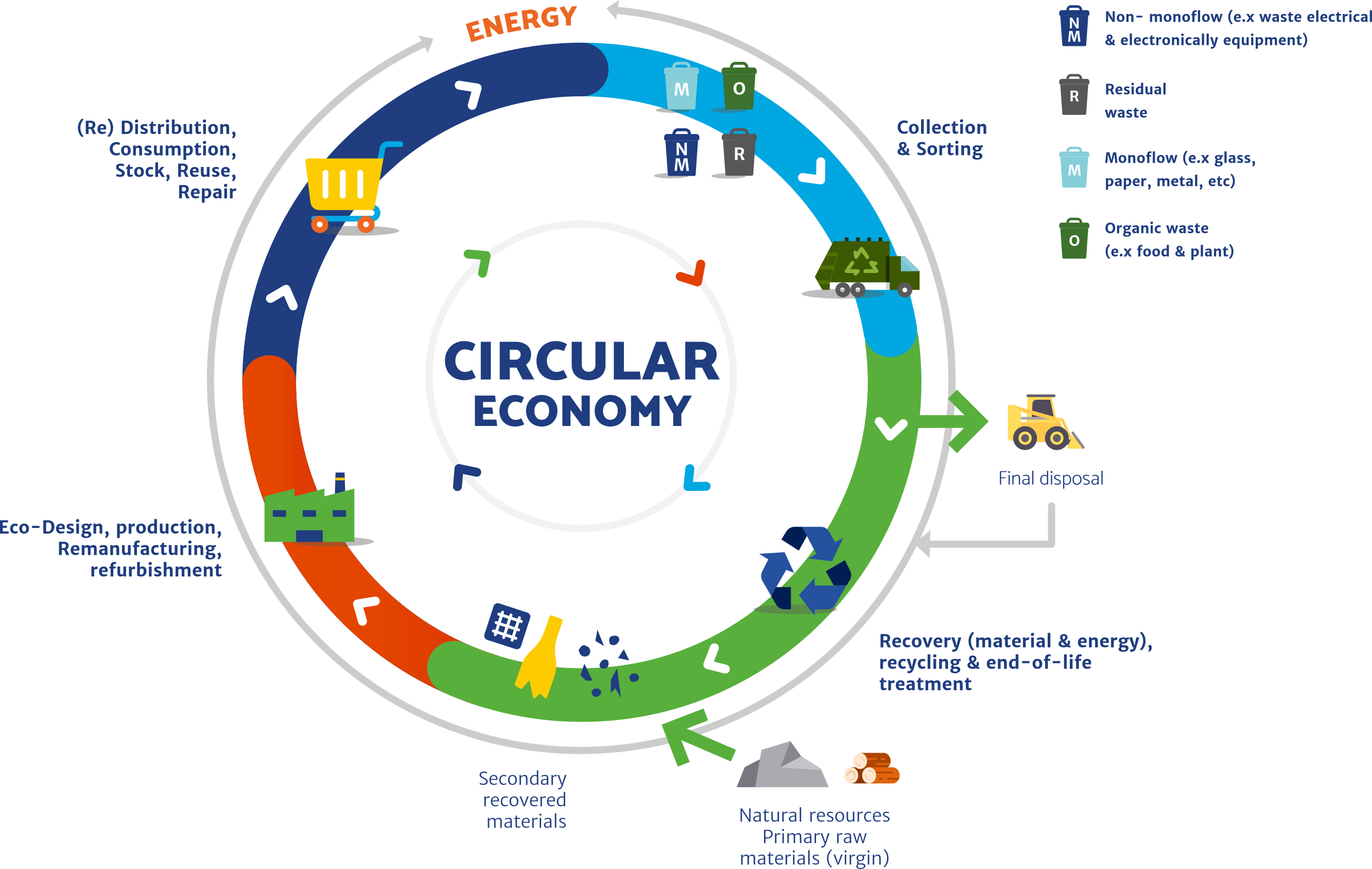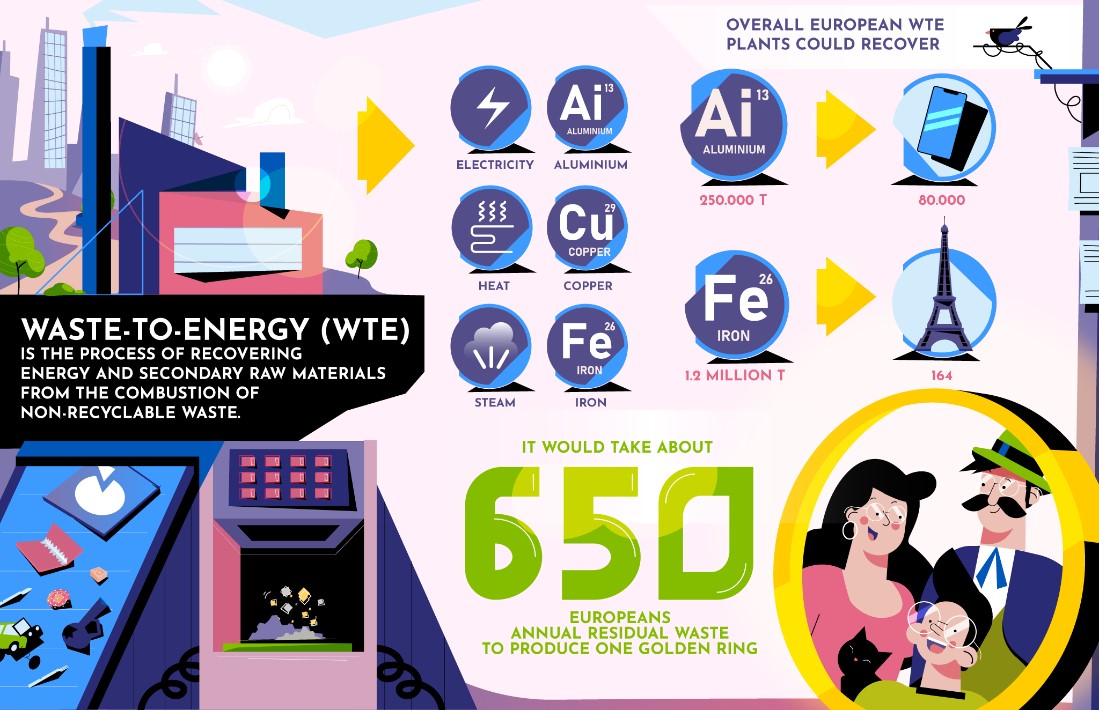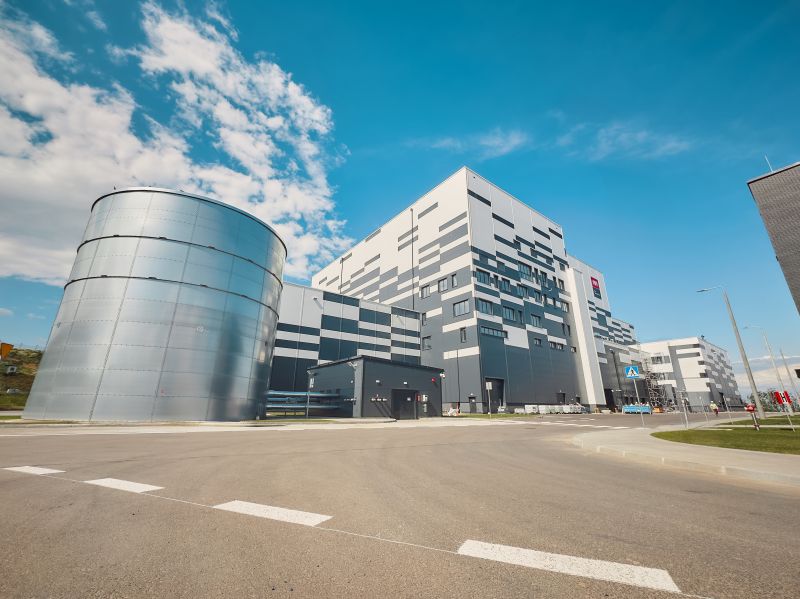How Waste-to-Energy contributes to the circular economy
How can thermal treatment of waste help to keep materials in the loop? Contrary to popular belief, Waste-to-Energy actively participates in the circular economy.

In order to be fully sustainable, we have to truly address waste challenges. The ultimate solution is the reduction of waste at source, meaning less waste production. However, until we reach that point, it is vital to retain products, in the circular loop before they are disposed of forever.
Improved and increased reusability, sorting, and recycling processes will play an important role in enhancing the circular economy. However, some residual waste streams, requiring safe treatment, will persist and potentially grow globally. Even with the best technologies in place, recycling will not always be possible or economically viable for certain waste. The only viable solution for treating this residual waste is in state-of-the-art Waste-to-Energy plants, which close the loop of the circular economy.
Waste-to-Energy offers a holistic approach to resource recovery from non-recyclable, non-hazardous waste; it diverts those wastes from landfills, recovers metals and minerals, and produces renewable energy (from the biodegradable fraction of waste), thus becoming an indispensable link of the circular economy and creating value for society.
 Source: Our focus – FEAD – European Waste Management Association
Source: Our focus – FEAD – European Waste Management Association
More specifically, Waste to Energy contributes to the circular economy by:
- Providing a hygienic service to the community by treating non-recyclable combustible waste and pollutants, which would otherwise end up in landfills.
- Providing secondary raw materials from incineration residues, a process known as material recovery.
- Recovering energy from waste and providing a local and reliable source of renewable electricity, heat, hydrogen and fuels, substituting fossil fuels and strengthening the EU’s energy security.
- Recovering the emitted carbon from its processes through carbon capture technologies and producing further products and fuels.
Material recovery
Waste-to-Energy plants can recover materials from the incinerated bottom ash, including aggregates, minerals, ferrous and non-ferrous metals (copper, aluminium, zinc) and even precious metals, such as silver and gold.
These materials are re-injected into the circular economy with practical and vital applications. They are in fact essential to the green and digital transition in Europe as metals are key components in electronics. For example, laptops and smartphones, batteries, solar panels, and wind turbines. Therefore, materials recovered from incineration bottom ash also contribute to avoiding the energy-intensive extraction and processing of virgin materials.
Bottom ash is also well suited for construction and can be used as an aggregate for base layers, for example in roads or parking areas. It can also be used for bridges and sound walls, or in concrete products such as bricks and kerbstones. Many European countries use bottom ash as an alternative to virgin material such as gravel and sand.
 Source: https://thebeautyinthebeast.eu/turning-trash-into-gold/
Source: https://thebeautyinthebeast.eu/turning-trash-into-gold/
Energy Recovery
By thermally treating non-recyclable waste, Waste-to-Energy plants can generate energy in the form of steam, electricity or hot water.
This energy, recognised as partly renewable, contributes to the transition away from fossil fuels in electricity, district heating systems, energy-intensive industries and the transport sector. In 2019 in Europe, Waste-to-Energy plants produced 43 billion kWh of electricity, which provided 20 million citizens with electricity.
One of the major advantages of energy produced from waste is that it is neither subject to price fluctuations of raw materials and fuels, nor vulnerable to relative supply problems. In a context of rising energy prices, energy from waste remains financially stable. Moreover, energy from waste is a secure baseload energy offering flexibility and stability to the energy grid, because of its complementary role to intermittent renewable energy sources.
The production of energy from non-recyclable waste is diversifying, with the generation of renewable and low-carbon hydrogen and synthetic fuels, which are crucial in reaching the climate objectives and the renewable energy targets set.
Waste-to-Hydrogen has multiple uses. For instance, in ammonia production and in transport, where it can decarbonise heavy transport by powering, among others, fuel cell buses and refuse trucks collecting municipal waste. A concrete example already exists in Wuppertal, Germany where Waste-to-Hydrogen powers 20 public transport buses. It is estimated that the city of Wuppertal already saves more than 700 tons of CO2 per year.
 Source: https://awg-wuppertal.de/ueber-uns/muell-macht-mobil.html
Source: https://awg-wuppertal.de/ueber-uns/muell-macht-mobil.html
CCUS technologies
The use of carbon capture for utilisation or storage (CCUS) technologies in WtE applications has the potential to significantly reduce the carbon footprint of the sector, while also constituting another way in which the sector contributes to the Circular Economy.
The carbon produced from WtE activities can be utilised in chemical products and plastics, for instance windows and other building materials that are produced from this carbon. Another type of utilisation of the captured carbon is the production of synthetic fuels, for instance methane and methanol, when combined with hydrogen produced also from WtE processes.
More information on the development of CCUS in the sector can be found here.


